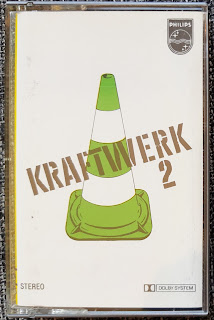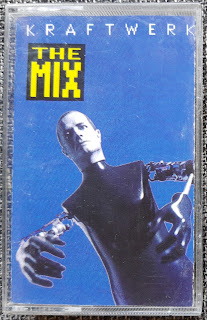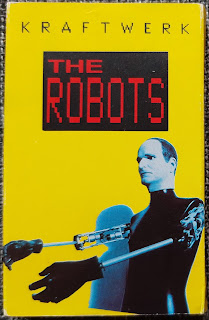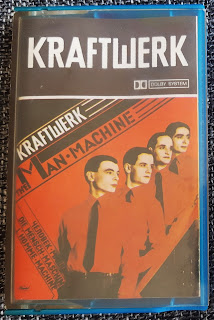
KRAFTWERK 2 (1979, Spain) Philips 71 05 249 A first on this blog, the second Kraftwerk album. Hard to come by and the pride of my collection, this, the Spanish edition, is the only place I have the full Kraftwerk 2 on cassette. The Spanish edition came in 1979, and the album has not been reissued since. Kraftwerk seems to have sold well in Spain, there were a lot of singles (vinyl, I mean!), all the albums have several editions, so I suppose that's why the two first albums came on cassette and LP in 1979; simply a case of the record company responding to demand. The Spanish cassette edition of "Kraftwerk 2" comes in a 2-panel J-card, with the iconic traffic cone on the front (but in green, unlike the debut, which I posted before ) and with the right panel crediting Florian Schneider-Esleben in full (he stopped using "Esleben" years before). There's a catalogue number for the LP, too, I suppose to facilitate placing an order for it in your local shop,



